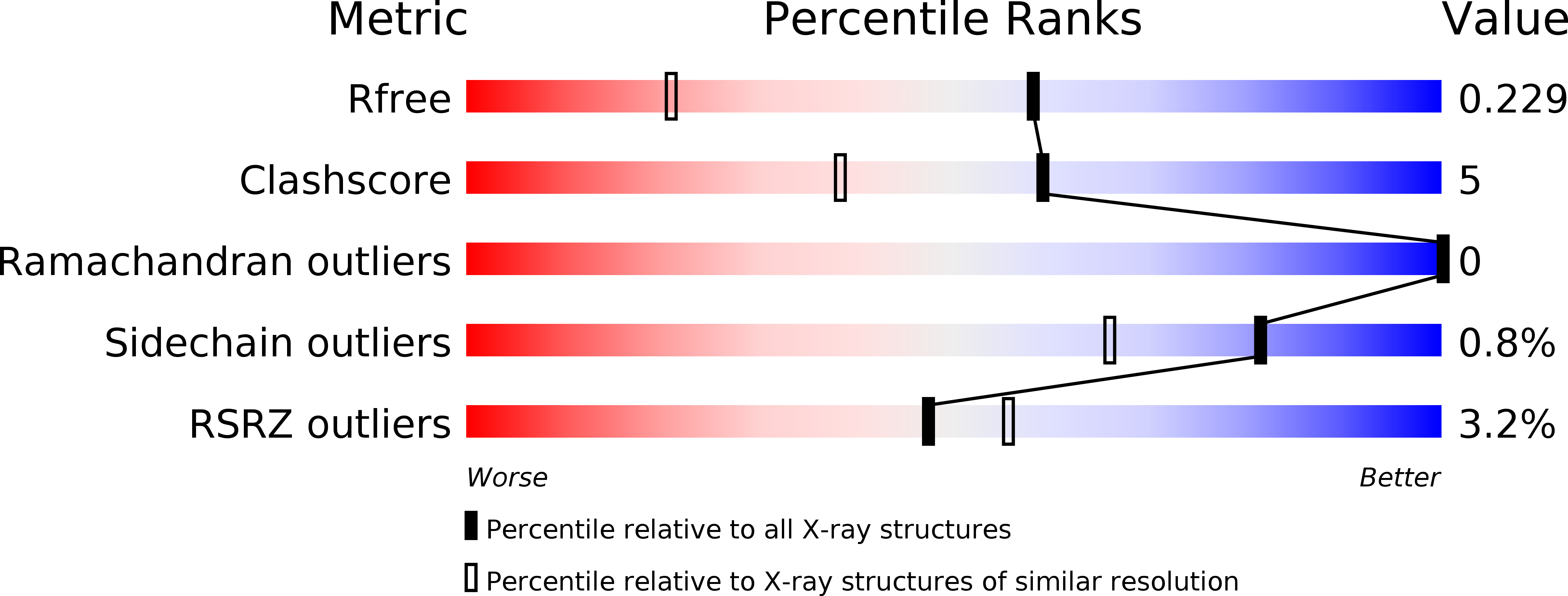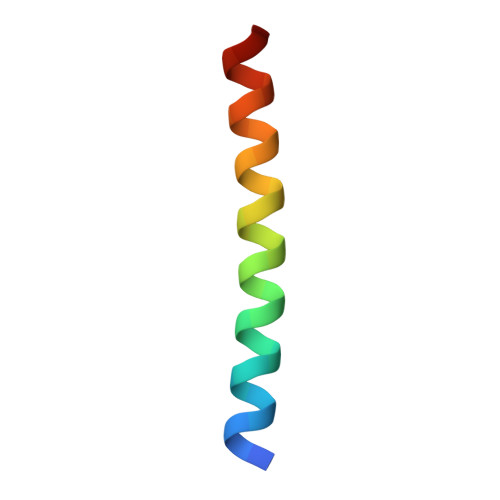Maintaining and breaking symmetry in homomeric coiled-coil assemblies.
Rhys, G.G., Wood, C.W., Lang, E.J.M., Mulholland, A.J., Brady, R.L., Thomson, A.R., Woolfson, D.N.(2018) Nat Commun 9: 4132-4132
- PubMed: 30297707
- DOI: https://doi.org/10.1038/s41467-018-06391-y
- Primary Citation of Related Structures:
6G65, 6G66, 6G67, 6G68, 6G69, 6G6A, 6G6B, 6G6C, 6G6D, 6G6E, 6G6F, 6G6G, 6G6H - PubMed Abstract:
In coiled-coil (CC) protein structures α-helices wrap around one another to form rope-like assemblies. Most natural and designed CCs have two-four helices and cyclic (C n ) or dihedral (D n ) symmetry. Increasingly, CCs with five or more helices are being reported. A subset of these higher-order CCs is of interest as they have accessible central channels that can be functionalised; they are α-helical barrels. These extended cavities are surprising given the drive to maximise buried hydrophobic surfaces during protein folding and assembly in water. Here, we show that α-helical barrels can be maintained by the strategic placement of β-branched aliphatic residues lining the lumen. Otherwise, the structures collapse or adjust to give more-complex multi-helix assemblies without C n or D n symmetry. Nonetheless, the structural hallmark of CCs-namely, knobs-into-holes packing of side chains between helices-is maintained leading to classes of CCs hitherto unobserved in nature or accessed by design.
Organizational Affiliation:
School of Chemistry, University of Bristol, Cantock's Close, Bristol, BS8 1TS, UK. Guto.Rhys@bristol.ac.uk.














